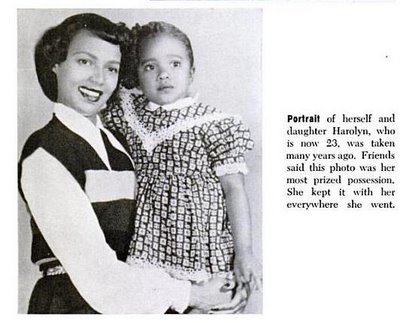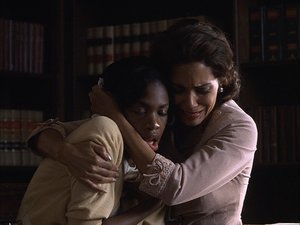[easyazon-image align=”left” asin=”B00005RDR6″ locale=”us” height=”160″ src=”http://ecx.images-amazon.com/images/I/51MC3yqCKxL._SL160_.jpg” width=”113″]The world of [easyazon-link asin=”B00005RDR6″ locale=”us”]The Shipping News[/easyazon-link], based on [easyazon-link asin=”B000B86FJQ” locale=”us”]the book of the same name[/easyazon-link] by E. Annie Proulx, is populated with a number of dysfunctional people passing as “normal”, only because they are fortunate enough to have average IQs. Emotional wreck Quoyle, having been raised by a cruel father, who almost drowns him using the ‘sink or swim’ method to teach him swimming, returns to his childhood home in Newfoundland after both his career as an inksetter in New York, and his relationship with Petal, a woman who sleeps around and drinks during her pregnancy with his daughter Bunny, go bust.
The latter flames out in spectacular fashion, with Petal and her latest man on the side dying an instant but accidental death after having crashed into a highway guardrail, and the police locating them and reclaiming Bunny after Petal apparently sold Bunny to an illegal adoption broker. Though Petal is never given a diagnosis in the movie, serious emotional problems are thereby implied. It is much the same with Quoyle’s father, who might well be a sociopath, as he not only “raped his little sister” but spends Quoyle’s formative years belittling him, the harassment only ending when he commits suicide, leaving a note with a parting guilt trip.
At least, unlike in real life, in the movie, these people die expediently before Quoyle returns to Newfoundland with his preteen daughter Bunny to make a fresh start. (He returns there because between family property- a rent-free house on a windy cliff kept from blowing away by tie-down cables-and a newspaper job arranged by family and friends, it is, at least in theory, relatively easy for him to survive and provide for his daughter.)
Alas, his new life will not be so easy: his newspaper job covering auto accidents, shipping news, etc., seems to be calculated to trigger his presumed PTSD.
Knocking around in a lonely old house full of draughts and creaks, Quoyle’s daughter Bunny starts claiming to see ghosts and engaging in such uncharacteristic behaviors as “bashing the brains out of her baby doll”, which the mental health establishment would consider to be signs of a disturbed child.
New love interest widow Wavey Prowse sees such things in a very different way, describing Bunny as “sensitive” (to supernatural phenomena), telling Quoyle not to worry about it. She seems quite normal, and even emotionally stable, though her son Herry, a boy who seems to physically be Bunny’s age, is marked by society and his appearance (hanging mouth, upturned eyes) as not being so. (Local opinion has it that the boy “ain’t right” because she was holding him while her husband drowned in a boating accident.)
When Wavey introduces Herry to Bunny and Quoyle at the playground, Bunny asks “what’s wrong with him?”.
Wavey at first tells Bunny that nothing is wrong with him, but later elaborates that “When he was being born, he didn’t get enough air to breathe, and that makes him a little slower than most people”. Herry does not speak then, or at any other time during the picture.
At a later time, Quoyle sees Herry standing outside his car, moving his head to track the swaying of his windshield wipers.
Though nothing more than a superficial acquaintance is made of Herry in the movie, it is revealed that other people are not quite what they seem in some respects. When reminiscing, Aunt Agnis, a dignified matriarch in the rest of the movie, described “the love of her life” as a woman named Irene, shown in an old photograph. Wavey reveals that her husband left her voluntarily (and is presumably still alive somewhere) but that she wrecked his boat and feigning widowhood, gained the sympathy and support of the townspeople thereby.
Introducing Dorothy Dandridge
 The HBO biopic Introducing Dorothy Dandridge , though focused on the singer/actress’s professional triumphs and disappointments, nonetheless offers a brief glimpse into her private life with her brain-injured daughter Harolynn.
The HBO biopic Introducing Dorothy Dandridge , though focused on the singer/actress’s professional triumphs and disappointments, nonetheless offers a brief glimpse into her private life with her brain-injured daughter Harolynn.
Harolynn’s birth was a difficult one, though the doctors and nurses seemed to give no indication that she had acquired any disabilities because of it. As she grew, Dandridge realized her verbal skills were not progressing, and began taking her to a string of doctors who prescribed such remedies as hot baths and head massages. Finally (as young Harolynn stares blankly ahead and kicks repetitively at the furniture), a woman doctor bluntly informs Dandridge that Harolynn has anoxic brain damage from birth, and advises Dandridge to place her in an institution and get on with her life. (Perhaps today she would have been diagnosed with autism.) Dandridge refuses, but her husband (who once had hopes of sending their daughter to finishing school in Switzerland) can’t handle the pressure and leaves them.
Dandridge hires caregivers and nurses at first, but mounting bills and career misfortunes necessitate moving to a small apartment. The final straw came when she got involved with an abusive man who stole over $120,000 of her money; Helen Calhoun, whom Dorothy had been paying handsomely through the years to look after Harolynn, returned her when Dorothy could not longer pay for her care. In a tearful scene, Dandridge relinquishes parental rights so Harolyn could be cared for in an institution at age 18. Harolynn is briefly seen next to her crying mother in the courtroom; her limbs appear contracted, her lower lip juts out, and she seems unfocused and unaware of the goings-on around her.
Harolyn does not appear again in the film, though at one point her mother expresses the wish to get her back as her motivation for trying to make a comeback. She died suddenly before returning to the stage though, and her death was ruled an accidental prescription drug overdose. Ironically, she had just completed an autobiography, and would have given the profits to charities for mentally retarded children.
Harolyn reportedly lived out her days in a state mental institution in Camarello, California. She (again, reportedly) died at the age of 60 on April 14, 2003. No one claimed her body. Other reports state that she is still alive and living in an institution; if those reports are true, she would be around 67. Due to medical privacy laws and the wishes–or neglect–of her remaining family, it is likely we will never know for sure.
The real Dorothy Dandridge reportedly carried a picture of Harolynn wherever she went, both before and after relinquishing her.


